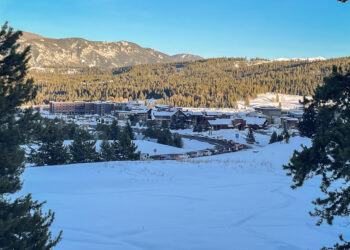By Jessianne Castle EBS Contributor
BOZEMAN – Big birds like big winds and the upward draft they provide. That’s why Montana is home to two of the largest golden eagle migration corridors in the lower 48 states and thousands of predatory birds pass overhead en route to warmer winter ranges every fall.
Both the Bridger Mountains near Bozeman and the Big Belts east of Townsend, with their strong winds rocketing off the peaks, are known as important raptor flyways. On average, more than 1,300 golden eagles are counted flying over the Bridgers between late August and early November.
According to Amy Seaman, the conservation program manager for the Golden Eagle Migration Survey in the Big Belt Mountains, migration is triggered by a number of things. It could be a change in the length of the day, it could be a change in food resources and availability, or it could be a change in the weather.
“As pressures change, it triggers them to get up and move,” Seaman said. “Often times, you get these really great flights right before or a few days after a storm.”
She added that raptors, and especially golden eagles, rely on strong winds for flight. “They really love the wind coming in and they come cruising over the ridges very quickly,” she said. “Golden eagles will sometimes still fly in bad weather. They love those high winds.”
To celebrate the fall migration, Bozeman’s Sacajawea Audubon Society partners with the Custer Gallatin National Forest, Montana Raptor Conservation Center and others in hosting the Bridger Raptor Festival each year at Bridger Bowl Ski Area. This year’s event, held Oct. 6-7, included workshops with live bird demonstrations and information booths.
HawkWatch International conducts daily count surveys at a helicopter platform atop the Bridger ridge each fall. It is there that HawkWatch International has been monitoring the migration since 1991, recording 18 different raptor species and between 2,000 and 3,500 total birds each year.
Beginning in September, observers record ospreys, broad-winged hawks and Swainson’s hawks, while October is the peak activity period for both golden and bald eagles. Rough-legged hawks tend to come through during the latter half of October.
“The best thing about raptor migration route sites is that raptors are pretty secretive with their nest sites, but you can survey so many species at once at a count site,” Seaman said. “With long-term data, you can see trends in adult or juvenile abundance and other demographic data.”
In recent years, golden eagle numbers have been in decline, and many researchers suggest it is due to land use changes, lead poisoning and climate change. “It’s a lot of little things here and there that are adding up,” Seaman said.
As of Oct. 2, Seaman said 338 golden eagles had been spotted in the Big Belt Mountains, while HawkWatch International reported 342 in the Bridgers as of Oct. 5.
Visit hawkwatch.org to learn more.













